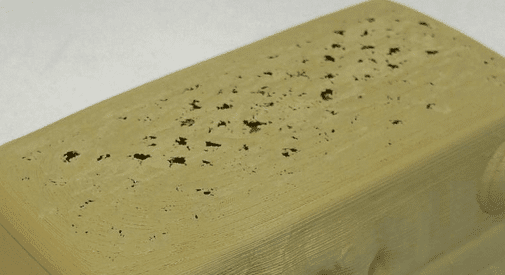 Pillowing usually happens when solid top or bottom infill layers don’t have enough time to cool down and therefore curl up. This usually occurs when the infill of the object is too low and there’s nothing for the first layer sequence of the solid infill layer to sit on and therefore it has to be printed over an empty void.
Pillowing usually happens when solid top or bottom infill layers don’t have enough time to cool down and therefore curl up. This usually occurs when the infill of the object is too low and there’s nothing for the first layer sequence of the solid infill layer to sit on and therefore it has to be printed over an empty void.
There are several ways to try to overcome this:
- Try increasing the infill depending on the object. Usually 25% or up is good. If the object is really small, you can actually get away with printing at 15% infill, which is the setting we usually print with. As the objects get bigger, you want to make sure there’s a support structure such as a crosshatch infill under the solid infill layer.
- Try lowering down the temperature.
- Try printing slower so your printer has enough time to deposit the plastic.
- Increasing the thickness of top/bottom solid infill layers also helps. We recommend having solid infill layers anywhere between 0.6-0.8mm. As the solid infill layer builds up, the last layer will finally make sure that all the gaps are closed. With very thin layers, the strands are more likely to break. A good way to remedy this is to lower the printing speed so that you can make sure you don’t have under-extrusion issues.



